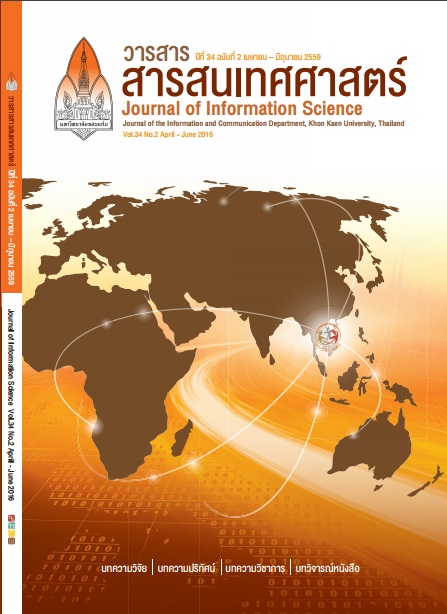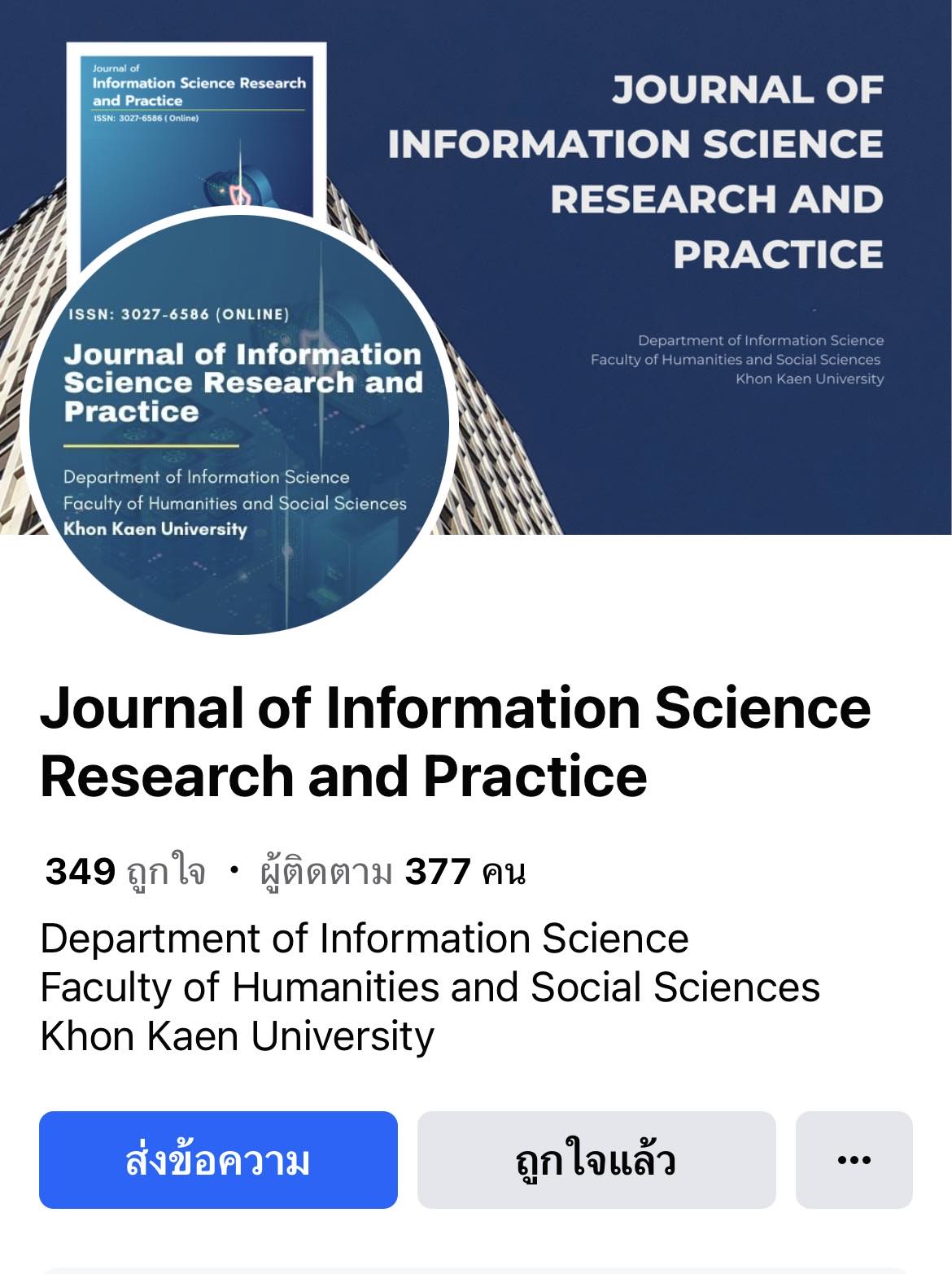การใช้บทเรียนอิเล็กทรอนิกส์เพื่อส่งเสริมการรู้สารสนเทศที่มีปฏิสัมพันธ์แตกต่างกันของนักศึกษาระดับปริญญาตรีมหาวิทยาลัยเทคโนโลยีสุรนารี (Usingof Different Interaction in e-Learning to Enhance Information Literacy of Undergraduates in Suranaree University....
Keywords:
บทเรียนอิเล็กทรอนิกส์, ปฏิสัมพันธ์, การรู้สารสนเทศ, นักศึกษาระดับปริญญาตรี, E-learning, Interaction, Information Literacy, UndergraduateAbstract
บทคัดย่อ
งานวิจัยนี้มีวัตถุประสงค์เพื่อศึกษา 1) ระดับการรู้สารสนเทศของนักศึกษาที่มีคุณลักษณะแตกต่างกัน 2) ระดับการรู้สารสนเทศของนักศึกษาที่ใช้บทเรียนอิเล็กทรอนิกส์เพื่อส่งเสริมการรู้สารสนเทศที่มีปฏิสัมพันธ์ระหว่างบทเรียนกับผู้เรียน 3)ระดับการรู้สารสนเทศของนักศึกษาที่ใช้บทเรียนอิเล็กทรอนิกส์เพื่อส่งเสริมการรู้สารสนเทศที่มีปฏิสัมพันธ์ระหว่างบทเรียนกับผู้เรียนและผู้เรียนกับผู้สอนและ 4) เปรียบเทียบระดับการรู้สารสนเทศของนักศึกษาที่ใช้บทเรียนที่มีปฏิสัมพันธ์แตกต่างกัน กลุ่มตัวอย่าง คือ นักศึกษาระดับปริญญาตรี ชั้นปีที่ 3 สาขาวิชาเทคโนโลยีการผลิตพืช มหาวิทยาลัยเทคโนโลยีสุรนารี จำนวน 60 คน เครื่องมือที่ใช้ในการวิจัย ประกอบด้วย บทเรียนที่มีปฏิสัมพันธ์ระหว่างบทเรียนกับผู้เรียน (บทเรียนชุดที่ 1) บทเรียนที่มีปฏิสัมพันธ์ระหว่างบทเรียนกับผู้เรียนและผู้เรียนกับผู้สอน (บทเรียนชุดที่ 2) และแบบทดสอบวัดระดับการรู้สารสนเทศ เมื่อวิเคราะห์ข้อมูลด้วยการทดสอบค่าที (t-test) ผลการวิจัยพบว่า 1) คุณลักษณะที่ส่งผลให้นักศึกษามีระดับการรู้สารสนเทศแตกต่างกัน ได้แก่ เกรดเฉลี่ยสะสม (GPA) และประสบการณ์การเรียนในวิชาการใช้ห้องสมุด 2)ระดับการรู้สารสนเทศหลังเรียนของนักศึกษาที่ใช้บทเรียนชุดที่ 1 สูงขึ้นกว่าก่อนเรียนอย่างมีนัยสำคัญทางสถิติที่ .05 (p = .000) 3) ระดับการรู้สารสนเทศหลังเรียนของนักศึกษาที่ใช้บทเรียนชุดที่ 2 สูงขึ้นกว่าก่อนเรียนอย่างมีนัยสำคัญทางสถิติที่ .05 (p = .000)4) ระดับการรู้สารสนเทศของนักศึกษาที่ใช้บทเรียนที่มีปฏิสัมพันธ์แตกต่างกันไม่มีความแตกต่างอย่างมีนัยสำคัญทางสถิติที่ .05 (p = .121)
Abstract
This study aimed to study 1) the level of information literacy of students who have different learner characteristics 2) the level of information literacy of students who used e-Learning with interaction between
learners and content; 3) the level of information literacy of students who used e-Learning with interactionbetween learners and content, in addition to learners and the instructor; and 4) to compare the information literacy level of the students between two methods. Subjects were 60 third-year students from School of Crop Production Technology at Suranaree University of Technology. The research tools consisted of two e-Learning courses namely the e-Learning with interaction between learners and content (e-Learning no.1); the e-Learning with interactions between learners and content, in addition to learners and the instructor (e-Learning no.2); and tests to measurethe students’ information literacy level. The pre-test and post-test scores were analyzed using t-test.The research findings showed the following results: 1)the learner characteristics affecting the information literacy level are GPA and the experience from attending the course How to Use the Library. 2)The post-test scores of students who used e-Learning no.1, were significantly higher than their pre-test scores (p = .000). 3)The post-test scores of students who used e-Learning no.2 were significantly higher than their pre-test scores (p = .000).4) There is no significant difference in the information literacy level between the students who used different interaction in e-Learning (p = .121)






